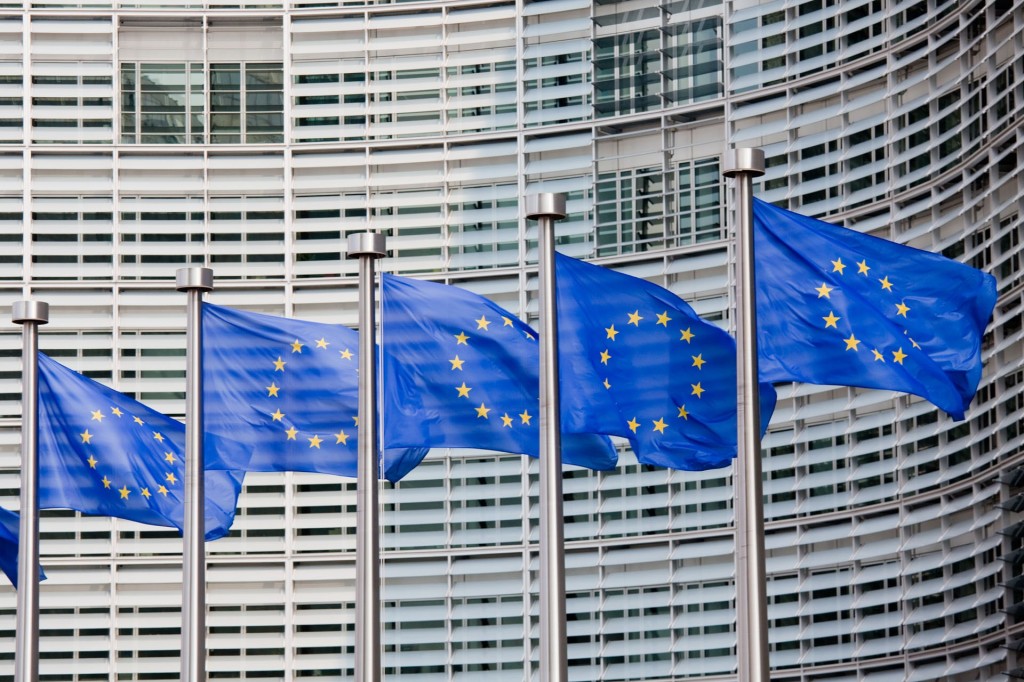Hallyu Hungary: How This Country Embraced the Korean Cultural Wave
Korean Cultural Center
Photo by Gabriella Kiss.
I had assumed that the Korean Cultural Center, an oasis of elegant tranquility on the Buda side a short walk from Margaret Bridge, was the second largest KCC after the one in Japan simply because South Korea is one of the largest foreign investors in Hungary. Not true.
The real explanation, as the Center’s Director Yu Hye Ryong told me, lies in this country’s astonishing embrace of what’s called “Hallyu” or the Korean Wave, manifesting as K-pop, K-drama, K-style, K-beauty, K-food, K-lit and K-knows what next.
Hallyu is the phenomenally successful soft power strategy cannily employed by the South Korean government to generate revenue from exports and tourism.
After the South Korean economy crashed in 1997, its government was forced to ask the IMF for a USD 57 billion emergency loan. Afterward, the government worried that its credibility as a place to do business had been damaged.
The president at the time, Kim Dae-jung, admired the way the United States generated revenue from movies and the United Kingdom from musicals and decided to create a Korean pop culture based on their example. He also wanted to stop Japanese cultural imports from flooding his country. Dae-jung first used the word hallyu in a speech in 1998.
Subsequent presidents built on Dae-jung’s strategy. President Lee-Myung-back created the Presidential Council on Nation Branding in 2009. In 2017, President Moon Jae-in promised to “increase the number of global Hallyu fans to 100 million.”
Thanks to a K-drama TV series called “Jewel in the Palace,” which first aired on Netflix in the 2000s and was a hit in this country, Hungary became a hotbed of European hallyu fanaticism early on.
When I asked Yu why she thought Hungary fell so hard for “Jewel in the Palace,” she answered: “I think it’s because the story is creative, but the characters and their emotions are relatable to any audience. The characters are not superheroes. While the Korean setting makes foreign audiences feel they’re watching something exotic, they can connect with how the characters are feeling and behaving.”
Korean Fairytales
This is undoubtedly true of Hungarian fans of K-dramas and films I’ve spoken to. One gushed, “I love the Korean TV series that are set in the past and are like fairy stories. They’re escapist and fascinating to me because they’re about another culture, another time. The scripts use metaphors we don’t have in Hungary, but they mean something to me,” my source said.
“For example, when I saw the Korean American movie ‘Past Lives,’ I really liked it when Nora, the female character, said that her relationship with her American partner was like ‘planting two trees in one pot. Our roots need to find their place.’ My friends and I write these aphorisms down. We learn from K-dramas. Also, having watched so many, I can now tell when the students in my local Starbucks are speaking Korean and not Chinese.”
Part of the appeal of K-dramas for this fan is the way the characters look. “They always have such nice skin and hands,” she said, “even the men.”
This is no doubt down to the stars’ K-beauty routine. Focused on health, hydration and making skin glow (South Koreans love what they call “glass skin”), Korean beauty brands began to make their global mark in 2011. The K-beauty industry is forecast to be worth USD 21.8 bln by 2026.
My first taste of K-anything was the 2012 earworm pop song and video “Gangnam Style” by Psy. Despite its specificity and seeming disposability, “Gangnam Style” had a palpable impact on the Korean economy, not just global awareness of its pop culture. Tourism to South Korea, specifically the Gangnam district referenced in the song, soared. Just as the country’s Hallyu architects had hoped.
K-pop, mainly in the person of visionary Lee Soo-man, seized the “Gangnam Style” baton and ran with it. Having seen MTV in the US in the 1980s and grasped the idea that the future of pop was in images, not the music itself, Lee began auditioning, training, producing, and managing K-pop groups while developing the technology to make their videos.
SM Entertainment, which Lee founded, introduced the boy band H.O.T. in 1996, widely considered the first K-pop idols. Yu believes that the model of intensive training for future K-pop stars pioneered by SM is responsible for the quality and popularity of bands such as BTS.
Pitch Perfect
“Korean production companies invest heavily in K-pop stars way before they make their debut,” she told me. “They go through several years of vocal, dance and acting lessons. That’s why they’re almost perfect from the very start.”
Today, far and away the most popular K-pop band is BTS, managed by Hybe, which owns a stake in SM. Their nearest rivals are all-girl Blackpink. And, lest it is thought that K-pop stars are just grinning, dancing puppets, it’s worth remembering that BTS has addressed the UN on climate change (take that, Bono), and K-pop fans are increasingly becoming activists. In 2020, they raised over a million dollars for Black Lives Matter in 24 hours.
K-drama and K-pop stars are now hugely influential fashion ambassadors. K-drama star Song Hye-Kyo represents the luxury brand Fendi. Lee Min Ho is the ambassador for Louis Vuitton. Ji Chang Wook was selected as Calvin Klein’s first Korean global model. K-pop stars J-Hope and Jimin from BTS appeared at the Dior show at the Autumn Winter 2023 Paris Fashion Show. Another member of BTS, Jungkook, is known as the “Sold Out King” because when he wears, uses, or consumes a product, it sells out, even if it costs thousands of dollars.
And it’s not just K-stars promoting international luxury brands. Homegrown South Korean brands, from ADER Error to Youth, are rapidly finding a global audience.
Even I, who can hardly claim to be a fashion expert, have noticed the influence of K-style on the Hungarian high street. I’ve recently seen several women wearing a combination of loosely belted, usually camel-colored raincoats matched with clunky shades and big trainers that look to be pure K-style. Apparently, this is called “soft office core.”
Director Yu, appointed in February of this year, was candid about why this country is home to the planet’s second-largest Korean Cultural Center.
Hungary Says ‘Hallyu’
“Hungary has the largest number of groups and communities of fans of Korean culture in the world, more than 200,” she said. “In 2016, they came together to form the HanYou Foundation.”
The mission of the Korean Cultural Center is twofold. The first is to promote Korean culture and enhance the country’s brand image.
“It’s clear that many Hungarians know about Hallyu, but they aren’t deeply familiar with our culture,” Yu says. The second mission is to strengthen cultural relations between the two countries. For Yu, it’s clear how popular Korean culture is in Hungary.
“We offer more than 10 language classes and 60 cultural classes, including K-pop dance, Taekwondo and traditional calligraphy. They’re usually 90% booked on the first day we offer them,” she explains.
Yu says she felt very much at home in Hungary from the moment she arrived, which surprised her as the countries seem, on the face of it, to be so different.
“I think it comes down to the historical and cultural similarities between us,” she told me. “My Hungarian friends who’ve visited Korea tell me they’re at home in my country, too.” Yu tallies off the connections.
“It’s because Hungary and Korea are both surrounded by big countries and have been invaded several times throughout our history. But we’ve managed to preserve our own culture and tradition and respect that about each other. We also put a high value on family and tradition. And we love spicy food. There are more than 30 Korean restaurants and bars in Budapest, and only 8,000 Koreans live in Hungary. When I go to a Korean restaurant, it’s mainly Hungarians enjoying the food,” she points out.
Yu has yet to experience the saunas and steam baths here, the other cultural tradition Hungary and Korea share, but she fully intends to. In the meantime, she’s a fan of Budapest.
“There are plenty of cultural events going on,” she said. “I enjoy visiting the galleries, churches, museums and, of course, Buda Castle. I feel so grateful to be in such a culturally enriched setting.”
As Director Yu Hye Ryong says, there are around 30 Korean restaurants and bars in Budapest. If you’re curious, these include Jindo, The Gangnam, Moim, Nanum, K-café and Korean-style pubs Dal Buam and Seoul Pacha. Should you want to learn how to prepare Korean dishes, find out more about the cooking courses at the Korean Cultural Center at www. hungary.korean-culture.org/hu. Find out more about the HanYou Foundation at www.hanyou.hu.
This article was first published in the Budapest Business Journal print issue of April 19, 2024.
SUPPORT THE BUDAPEST BUSINESS JOURNAL
Producing journalism that is worthy of the name is a costly business. For 27 years, the publishers, editors and reporters of the Budapest Business Journal have striven to bring you business news that works, information that you can trust, that is factual, accurate and presented without fear or favor.
Newspaper organizations across the globe have struggled to find a business model that allows them to continue to excel, without compromising their ability to perform. Most recently, some have experimented with the idea of involving their most important stakeholders, their readers.
We would like to offer that same opportunity to our readers. We would like to invite you to help us deliver the quality business journalism you require. Hit our Support the BBJ button and you can choose the how much and how often you send us your contributions.










